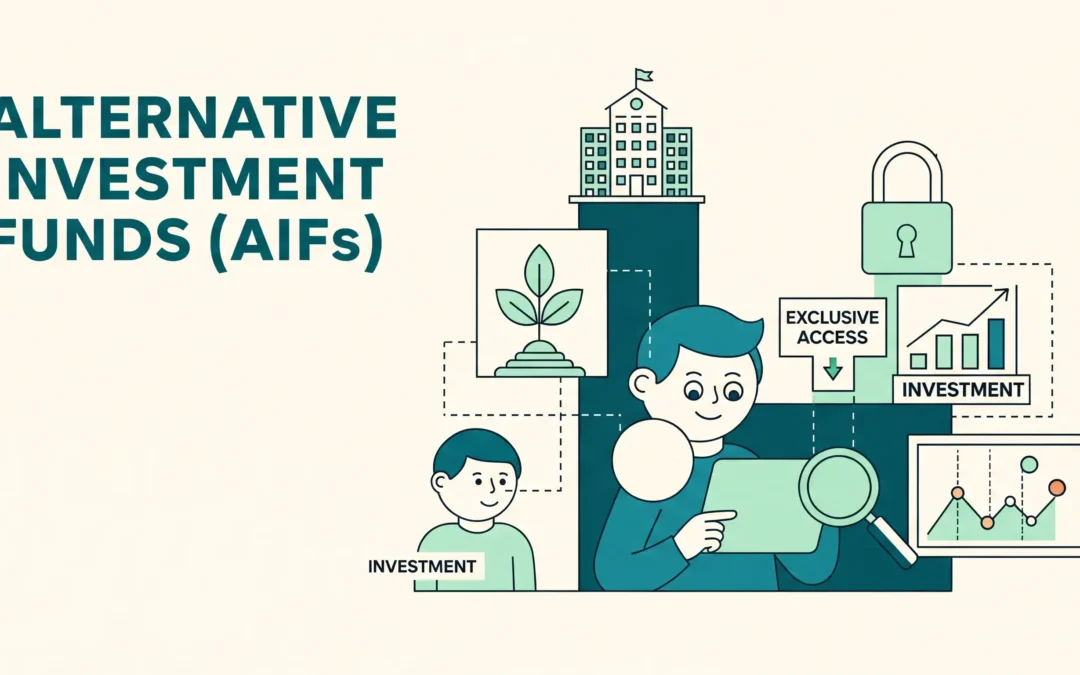Alternative Investment Funds (AIFs) are SEBI-regulated investment vehicles designed primarily for high-net-worth individuals and institutional investors. While they are less common among retail investors, AIFs have grown rapidly in popularity and assets under management in recent years.
Only some AIFs, such as venture capital funds, specifically focus on supporting start-ups. This helps in their personal growth, along with the economy as a whole. There are several categories of AIFs, which are not known to many.
This article will help us understand the meaning and categories of AIFs along with their advantages and drawbacks. It will also help in knowing the suitability of these funds.
Understanding the Categories of AIFs
Private investment vehicles known as Alternative Investment Funds (AIFs) gather money from investors and use it to purchase non-traditional assets such as venture capital, hedge funds, real estate, and private equity. AIFs are not considered traditional mutual funds and are governed by SEBI in India. High-net-worth and institutional investors looking for diversification and a larger return are their main target audience.
In India, AIFs are divided into three groups according to their risk-return profile and investment approach. Every category serves a distinct investor type and investment objective
Category I – Growth and Social Impact Focus
These funds direct investments towards economically or socially desirable industries. Among them are:
- Investing in start-ups or early-stage businesses is done through venture capital funds.
- Angel funds are pooled investment vehicles through which accredited investors collectively invest capital in promising early-stage companies (start-ups).
- Infrastructure funds are intended for long-term projects such as energy, power, or roads.
- These funds may be eligible for certain regulatory incentives, but they often invest in early-stage or unlisted businesses, which can make them high-risk compared to traditional investments.
Category II – Private Equity and Debt-Oriented Funds
In India, this is the most popular category. These funds:
- Invest in debt instruments or unlisted businesses.
- Add credit opportunity funds, real estate funds, and private equity funds.
- For investors looking for controlled risk and moderate to high returns, they are perfect.
Category III – High-Risk, High-Return Strategy
These funds employ advanced tactics such as:
- Make use of leverage
- The practice of arbitrage
- Short-selling and derivatives
- This group includes hedge funds and long-short funds.
- These are appropriate for high-risk investors who want to optimise their profits.
| Category | Primary Focus | Risk Level | Examples |
| Category I | Socially beneficial, early-stage ventures | Low to Moderate | VC funds, Angel funds, Infrastructure |
| Category II | Private equity, debt, and real estate | Moderate | PE funds, Debt funds, Real estate funds |
| Category III | Leverage-based strategies, arbitrage | High | Hedge funds, Long-short equity funds |
Should You Invest in AIFs?
Although AIFs are effective instruments for generating wealth, they have a unique set of benefits and drawbacks.
Benefits of Investing in AIFs
- Portfolio Diversification: AIFs make investments in unconventional assets such as venture capital, real estate, and private businesses.
- Professional Management: Managed by experienced fund managers with an extensive understanding of the market.
- Customised Investment Strategies: Fit for a range of investor objectives, including aggressive and conservative ones.
- Access to Special Opportunities: A lot of AIFs make investments in industries that are closed to individual investors.
Drawbacks of AIF Investing
- High Minimum Investment: The minimum required investment is Rs. 1 crore, or Rs. 25 lakh for accredited investors.
- Reduced Liquidity: Lock-in durations may be three, seven, or longer.
- Higher Fees: Compared to mutual funds, management and performance fees may be more expensive.
- Regulatory Complexity: More complicated and opaque than traditional funds.
Who Should Consider AIFs?
Let us understand the suitability of these funds:
People with high net worth (HNIs)
AIFs are best suited for wealthy people with a significant excess of investable capital because they require a minimum investment of Rs. 1 crore (Rs. 25 lakh for accredited investors). For HNIs who want to:
- Diversify their holdings beyond stocks and mutual funds.
- Get access to exclusive private market offers.
- Increase profits by using specialised investing techniques.
- AIFs present a strong choice.
Institutional Investors
Organisations with the size and long-term vision needed for AIF investments include family offices, endowment funds, insurance providers, and pension funds. These establishments usually:
- Employ experts to evaluate risk.
- Prefer to be exposed to hedge funds, infrastructure, or private equity.
- Look for investments with returns that are not influenced by the state of the market.
- These organisations use AIFs to capture alpha from specialised industries and balance their portfolios.
Experienced investors with a tolerance for risk
If you have a long-term horizon, a risk tolerance, and market knowledge, AIFs might be a good fit for you even if you are an individual investor. These financiers:
- Recognise illiquidity and feel at ease with lock-in periods of several years.
- Recognise sophisticated financial products (such as Category III derivatives or leverage).
- Desire to engage in alternative growth opportunities such as distressed assets, startups, or pre-IPO businesses
Bottomline
While AIFs are less well known among retail investors, they represent a fast-growing segment for high-net-worth and institutional investors in India. Different categories of AIFs come with varying risk profiles and strategies, and they can offer diversification and unique opportunities for wealth creation.
However, they are suitable mainly for investors with high risk tolerance, a long investment horizon, and surplus investable capital, due to factors such as illiquidity and minimum investment requirements. The knowledge about these funds among investors empowers them to make informed decisions and find an investment option that perfectly aligns with their investment objective.


